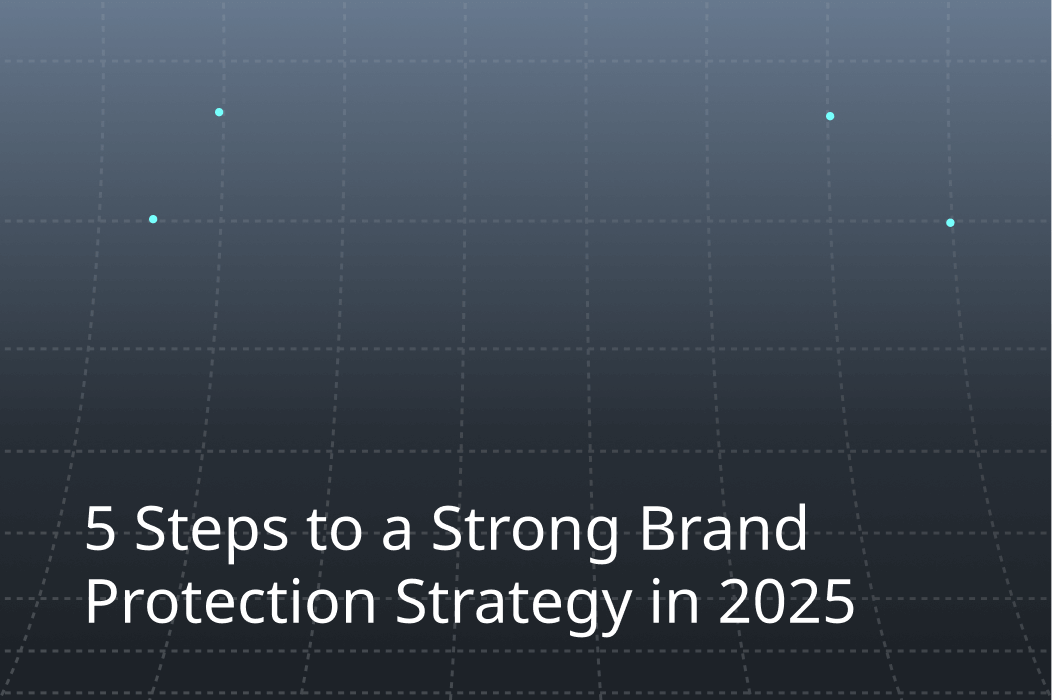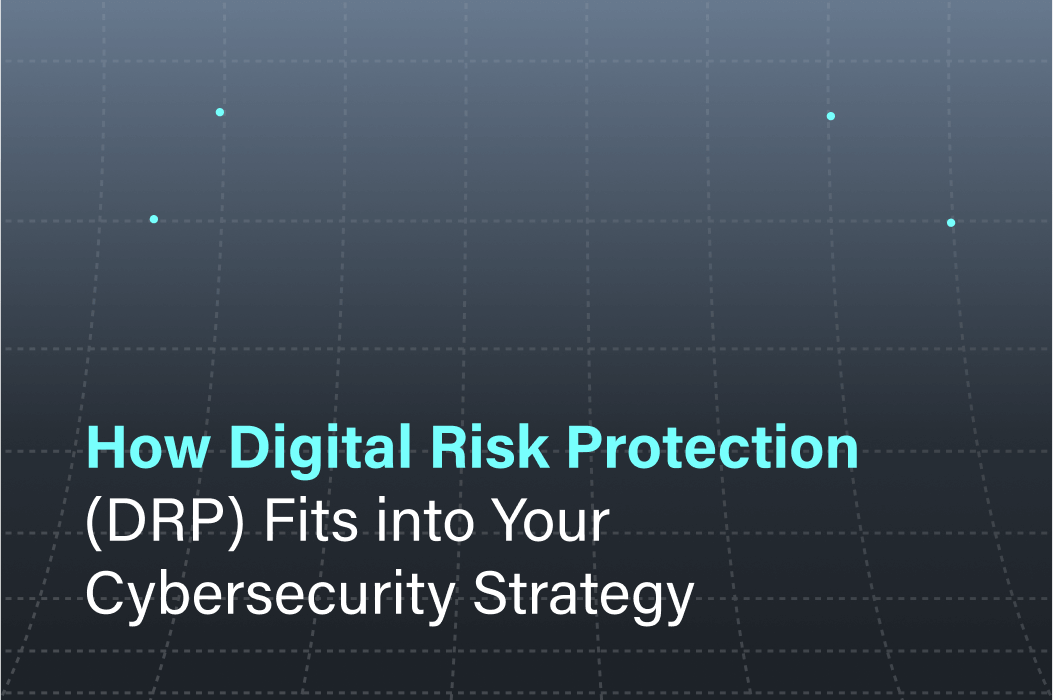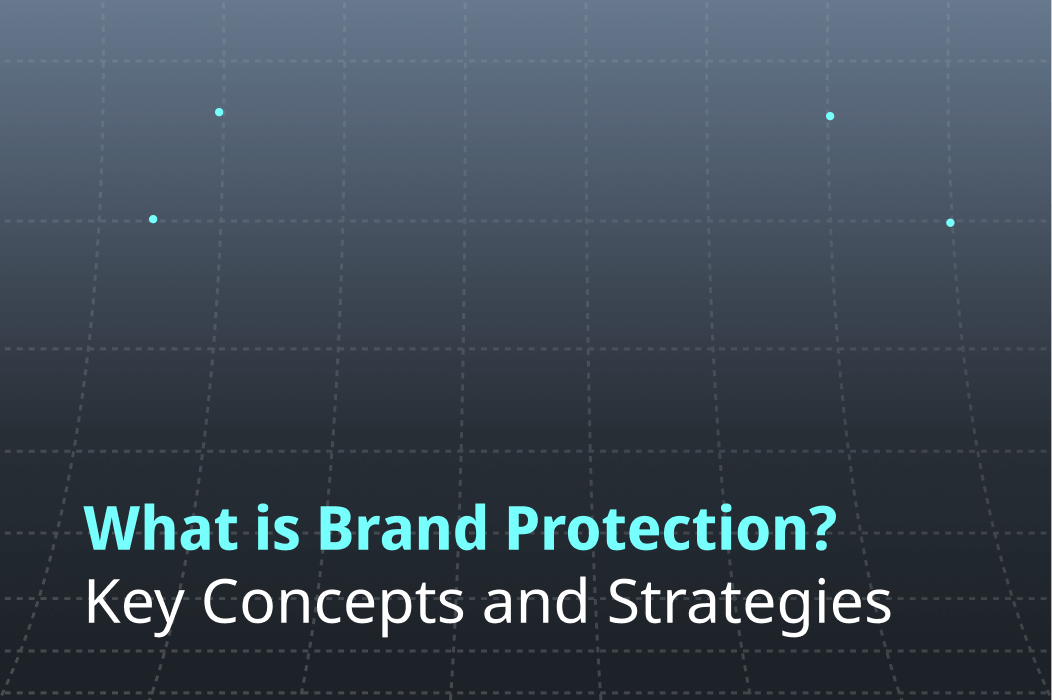With rising digital threats and increasingly savvy consumers, businesses must prioritize brand security to avoid damaging repercussions. Techniques around cyber attacks, counterfeiting activities, and unauthorized use of intellectual property continue to evolve—posing significant risks to brand integrity, revenue, and customer trust.
From CISOs to CMOs, a future-driven brand protection strategy is no longer optional. It’s essential for maintaining market leadership and driving customer acquisition and retention. Protecting the brand today with best practices and the latest technology ensures organizations thrive while safeguarding customer relationships and ensuring sustainable growth.
Why Brand Protection is Essential for Businesses in 2025
According to a recent Status Labs report, 5.44 billion people are online and 95% of them use the web to learn more about businesses — with 68% of their searches starting with a search engine.
How organizations present their brands online directly impacts how consumers respond and buy from them. The report also stated that companies can see a potential 23% increase in revenue due to their consistent brand presence across multiple online platforms.
This is why 90% of surveyed executives rank reputation as the most significant risk for companies and 88% are working to manage reputational risk.
If your organization isn’t investing in online brand protection solutions (opens in new tab) or actively monitoring your brand, it’s time to consider advanced solutions such as AI, machine learning, and real-time monitoring to detect, respond to, and even anticipate risks before they escalate.
Rising Threats in the Digital Landscape
As you know, cyber threats continue to rise. According to Resolver Releases 2024 Reputational Risk Report, more than half of the executives surveyed believe their organizations will face reputational crises in the coming year.
Some potential digital risks that can cause reputational damage and financial loss include:
- Counterfeit Products & Piracy – Unauthorized copies of products, services, or content
- Phishing Scams – Cybercriminals impersonating others to get sensitive data
- Domain Spoofing & App Fraud – Fake websites, apps, or domains mimicking a brand
- Social Media Impersonation – Fraudulent accounts pretending to represent a brand
- Data Breaches – The theft or exposure of customer or business data
- Malware and Cyberattacks – Malicious software or ransomware
- Influencer and Affiliate Fraud – Misleading endorsements, fake followers, or unethical affiliate practices
78% of the survey participants from the Revolver Report noted that responding to digital risks too late could harm their brand’s reputation among other consequences like negative publicity, reduced sales, and diminished employee morale.
With proactive brand protection, organizations can secure and monitor their company against these advanced cyber tactics and prevent potential damage to their brand reputation, employees, customers, or partners. For ideas on managing these advanced cyber threats, check out our guide on the latest threats and how to manage impersonation in social media.
The Role of Consumer Trust in Brand Value
Status Labs reports brand recall takes at least five to seven impressions. Each interaction must invoke trust and value to maintain a strong and positive brand reputation.
Research conducted by Trustpilot states consumers ranked a positive internet reputation as the #1 most important factor when determining which business to use — even above the quality of products and services. In the same report, they discovered that 95% of consumers trust a corporation with a positive reputation.
However, if an organization gets breached, consumers often lose trust as they could be seen as seemingly careless with their data.
Legal and Regulatory Impacts
Reputational damage and consumer trust aren't the only things organizations have to consider — securing intellectual property, complying with privacy laws, and maintaining consumer protection standards are essential to preventing legal disputes, losing IP rights, and avoiding financial penalties.
Regulations such as GDPR, CCPA, and HIPAA mandate data privacy. Breaches and non-compliance can lead to hefty fines. Similarly, consumer protection laws and advertising regulations, such as FTC guidelines, require transparency and proactive enforcement to prevent scams, false endorsements, and deceptive practices.
Non-compliance may result in regulatory action and legal liabilities, on top of losing customer trust. In industries like finance or healthcare, organizations may even have their license revoked and further litigation.
However, organizations shouldn’t have to worry about lingering legal ramifications, compliance, and the what-ifs of cyber threats. With proactive brand protection strategies, organizations can be ready, monitoring, and me
5 Steps to a Strong Brand Protection Strategy in 2025
With our 5-step framework for a robust brand protection strategy, companies can enter 2025 with confidence.
Step 1: Conduct a Thorough Brand Risk Assessment
To conduct an effective business risk assessment and create a targeted protection plan, businesses should assess key assets to protect, such as trademarks, digital solutions, intellectual property, and customer data. Next, they should search and determine their internal and external vulnerabilities including counterfeiting, phishing, data breaches, and IP theft.
Following risk identification, a thorough evaluation and ranking of each risk's severity are necessary to develop a focused strategy to address the most critical risks to prevent financial losses, operational disruptions, and reputational damage.
Step 2: Develop a Comprehensive Brand Protection Policy
A clear framework is needed for an organization's brand protection policy with step-by-step protocols and actions for identifying, monitoring, and mitigating digital threats such as counterfeit goods, phishing attacks, domain spoofing, unauthorized use of intellectual property, and more.
Establishing a dedicated, cross-functional team from IT, marketing, legal, compliance, and operations is critical to preventing threats and quick action.
Playbooks should be documented with who is responsible for what including detailed processes for potential threats such as enhanced cybersecurity measures and takedown actions against malicious activities.
Step 3: Implement Proactive Monitoring Across Digital Channels
A strong online brand protection strategy should include real-time monitoring systems across websites, social media, e-commerce platforms, and other digital channels to catch threats early. Businesses can leverage advanced technologies like AI and machine learning algorithms to detect fraudulent activities and set up alerts for brand mentions and keywords across digital channels.
Organizations can also deploy advanced web crawlers to scan for counterfeit listings, spoofed domains, and spoofed websites. IT and marketing teams can join forces by utilizing social media listening tools to pinpoint impersonations, fraudulent ads, or negative mentions.
Step 4: Take Swift Action with Real-Time Threat Response
By implementing automated threat response tools with real-time alerts, cybersecurity teams can respond to emerging threats and minimize potential damage. Real-time dashboards and reports can be combined with incident response systems to consolidate threat data to discover patterns and suspicious activities.
Teams may also implement automatic containment measures to defend against common tactics, including disabling compromised accounts, blocking malicious domains, or removing counterfeit products.
Step 5: Educate Your Team and Stay Updated on Emerging Threats
Having the latest and greatest threat response and digital tools can still leave security gaps. It’s important to communicate with the organization's employees, customers, and partners about the latest vulnerabilities and how they may impact their stakeholders.
Analyzing incidents and documenting their root cause, response actions, and outcomes help organizations continually improve and react quickly. Regular reviews and refinement of playbooks and further employee training based on emerging threats and lessons learned will keep security at the forefront of the business and the brand protected.
How Technology is Shaping Online Brand Protection in 2025
Organizations can take these online brand protection strategies to the next level by leveraging automation technology for enhanced threat detection and incident response. Tools like AI-powered brand protection solutions (opens in new tab) track real-time mentions across social media, websites, and marketplaces. AI and machine learning can also be used for threat intelligence and incident response to discover vulnerabilities and suspicious activity, as well as reveal patterns with alerts and automated workflows to take immediate action.
Whatever digital risk protection (opens in new tab) tools organizations are evaluating for their tech stack, it’s vital to choose solutions that easily integrate with existing systems, ideally with single sign-on, have scalability, and provide automated, actionable insights for comprehensive brand protection.
How Doppel Can Strengthen Your Online Brand Protection Strategy
Businesses like yours can outpace attackers and remove threats before they impact your business with Doppel's AI-powered digital brand and executive protection solutions (opens in new tab).From URLs, Crypto, social media, and all the way to eCommerce platforms, we can be your first line of defense when it comes to protecting your brand.
Discover more with our online brand protection guide and request a demo (opens in new tab) to see how our innovative approach to AI models, honeypots, and API reporting will secure your organization’s brand and reputation.
FAQs
How do I prioritize brand protection efforts across multiple digital channels?
Prioritizing brand protection across digital channels begins by:
- Identifying where your brand has the highest visibility and risk with a risk assessment
- Develop a brand protection policy with a dedicated team and step-by-step protocols.
- Implement proactive monitoring across your digital channels.
- Take action with real-time threat response alerts, dashboards, and automated workflows.
- Educate your team, and stay updated on emerging threats for continual analysis, improved detection, and ongoing training.
How can I integrate brand protection into my company's overall cybersecurity strategy?
You can integrate brand protection into your company’s cybersecurity strategy by spearheading a diverse team from IT, cybersecurity, marketing, legal, and operations to ensure your organization is armed with an action plan to move fast when inevitable cyberattacks arrive.
What are the best tools for monitoring brand threats in real-time?
The best types of tools for monitoring brand threats in real-time include:
- Threat Intelligence
- Social Media and Paid Ad Monitoring
- Telco Fraud Detection
- E-Commerce Monitoring
- Domain and DNS Monitoring
- Phishing Detection
- Crypto Exchanges and NFT Platform Monitoring
- Search Engine Monitoring
- URL and Dark Web Monitoring
- IP and Trademark Protection
- Malicious App Detection
Discover how Doppel can help you leverage these tools with our social engineering defense platform (opens in new tab).
What steps should I take if my brand experiences a reputational crisis online?
If your brand experiences a reputational crisis online, take the following steps:
- Assess the situation with your crisis management and response team.
- Acknowledge the issue head-on. If breached, you must legally inform and suggest ways to prevent further damage to affected employees, customers, and partners.
- Act quickly to find the vulnerability, block access, and mitigate the root cause. You can leverage past and current playbooks to act fast.
- Monitor closely in real-time through incident response, threat detection, web, and social media listening tools.
- If the crisis involves defamation, counterfeit products, social media impersonation, or hacking, you should seek legal advice.
- Conduct a post-crisis analysis to understand what went wrong, assess the effectiveness of your response, and refine your crisis management plan to prevent future incidents.
- Launch initiatives to rebuild trust with employees, partners, and customers.



